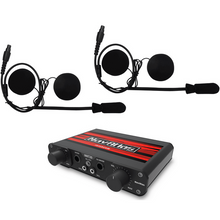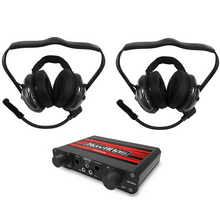What to Look Out for When Buying Polaris Ranger XD 2 & 4 Person Systems?
2-Person vs. 4-Person Intercom System
When purchasing Polaris Ranger XD 2 & 4 person systems, it's crucial to consider the type and the capacity of the system, and the choice between a 2-person and a 4-person system should be the first problem you should solve. This should align with the number of riders usually in the Polaris Ranger XD, ensuring everyone can communicate effectively. Assess whether a basic handheld radio system suffices or if a more elaborate, vehicle-mounted radio and intercom system is necessary based on the number of passengers. So, if you drive your Ranger XD 1500 with more than two people or you want a system that can communicate with other riders wirelessly, a 4-person system is better as it can be used as a 2-person system while a 2-person system can not be used as a 4-person system.
Durability and Weather Resistance
Given the off-road environments Polaris Ranger XD often navigates, it’s a good idea to opt for systems that boast robust build quality and can endure rough terrains and adverse weather conditions. A system that resists dust, water, and impacts will prove more reliable and long-lasting, particularly if your drives involve traversing rugged, muddy, dusty, or wet landscapes.
Ease of Use and Installation
A user-friendly Ranger XD 1500 user experience and straightforward installation process are essential for a hassle-free experience, especially if you often install and remove your system between drives. The system should allow easy mounting, utilization, and removal, mitigating any potential frustration or damages that occur during those processes. Evaluate whether the system’s operation is intuitive and whether the installation can be conducted without professional assistance.
Advanced Features and Connectivity
Consider systems that offer advanced features like Bluetooth connectivity, voice activation, push-to-talk, and hands-free operation. These features enhance the user experience by providing convenience and additional functionalities such as music streaming and GPS integration. All of this will allow you to focus on driving your Polaris Ranger XD instead of worrying about activating/deactivating your system or unplugging some of the systems unintentionally.








































